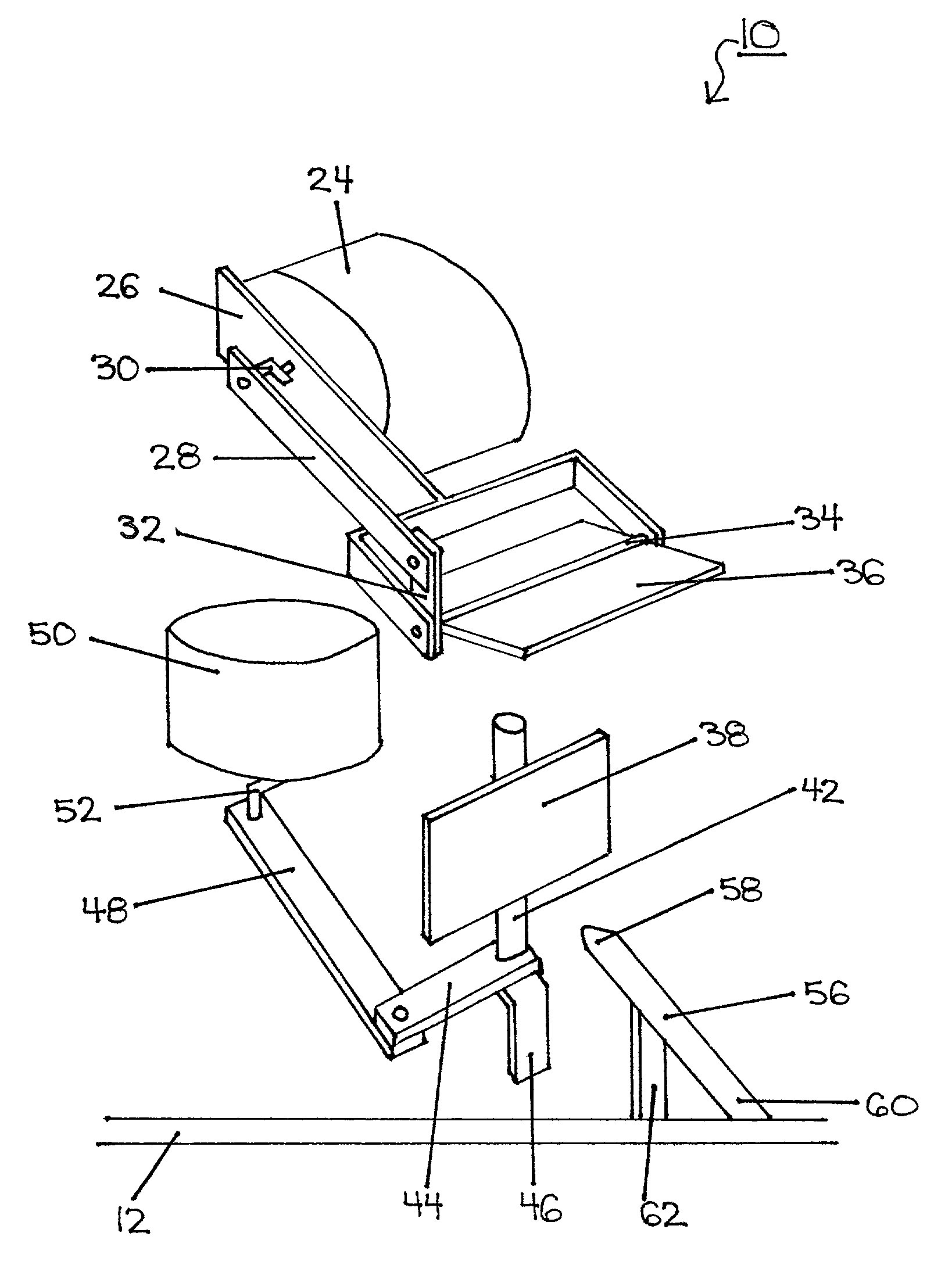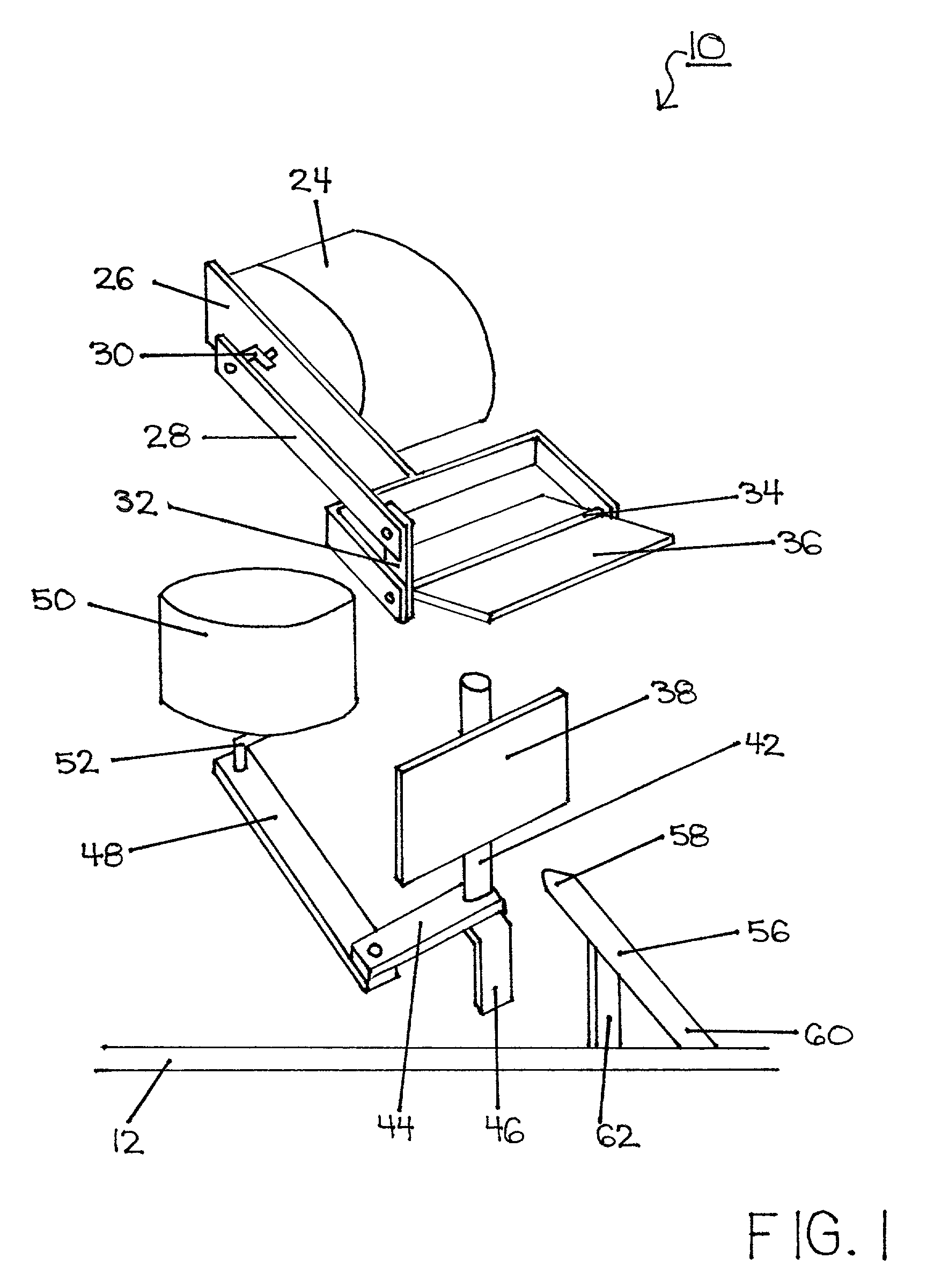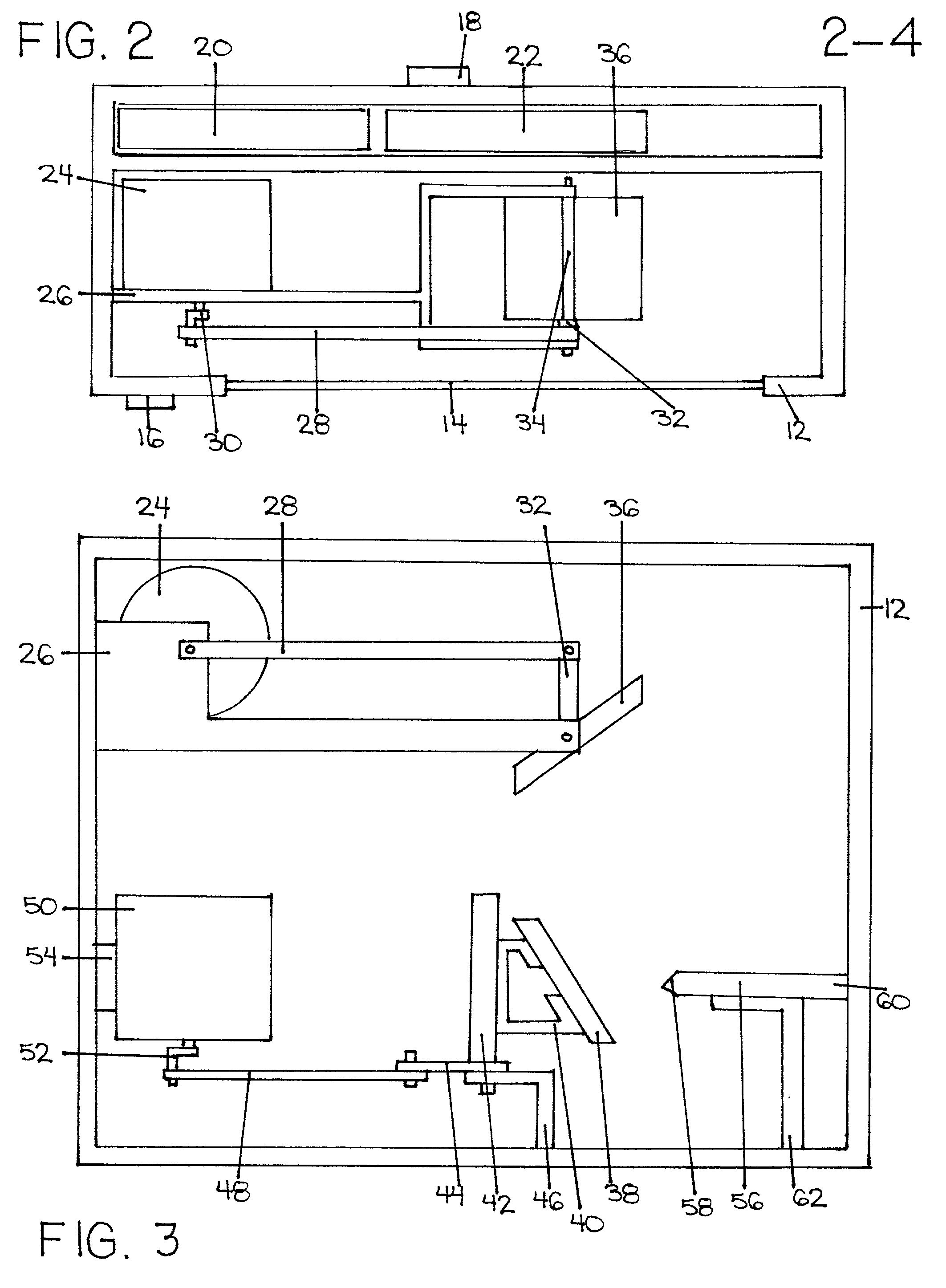Laser pet toy
a laser and pet toy technology, applied in the field of improved laser pet toys, can solve the problems of unused toys, pain, and pain in the owner's fingers, and achieve the effect of keeping the interest of the p
- Summary
- Abstract
- Description
- Claims
- Application Information
AI Technical Summary
Benefits of technology
Problems solved by technology
Method used
Image
Examples
second embodiment
[0039] In a second embodiment, as shown in FIG. 4, a mirror 102 is mounted at an angle to a bracket 104 by gluing or any other type of fastener. The bracket 104 is mounted lengthwise to a shaft 106 by gluing or any other type of fastener. The lower end of shaft 106 is connected about perpendicular to the first end of arm 108 by glue or any other type of fastener. In addition, the lower end of shaft 106 is also connected to a bracket 110 by means of a pin or any other type of fastener. The second end of arm 108 is connected to the first end of arm 112 by a pin or any other type of fastener. The second end of arm 112 is connected to the first end of arm 116 by a crank arm 114. The second end of arm 116 is connected to a motor 118 by a crank arm 120. The motor 118 is connected to a motor bracket 122 by screws, however, gluing or other fasteners could also be used. A crank arm 120 connects the motor 118 to the first end of arm 124. The second end of arm 124 is connected about perpendicu...
third embodiment
[0042] In a third embodiment, as shown in FIG. 5, a motor 202 is connected to a motor bracket 204 by screws, however, gluing or other fasteners could also be used. The motor 202 is connected to the first end of arm 206 by a crank arm 208. The second end of arm 206 is connected about perpendicular to first end of arm 210 by a pin or any other type of fastener. The second end of arm 210 is connected about perpendicular to the first end of shaft 212 by gluing or any other type of fastener. In addition, the first end of shaft 212 is also connected to a bracket 204 by means of a pin or any other type of fastener. The second end of shaft 212 is connected to the bracket 204 by means of a pin or any other type of fastener. Mirror 214 is fastened lengthwise to shaft 212 by gluing or any other type of fastener.
[0043] A laser source 218 is mounted on the first end of bracket 216 by screws, however, gluing or other fasteners could also be used. The laser source 218 is comprised of a laser emitt...
fourth embodiment
[0044] In a fourth embodiment, as shown in FIG. 6, a motor 302 is connected to the first end of arm 306 by a crank arm 308. The second end of arm 306 is connected about perpendicular to the first end of arm 310 by a pin or any other type of fastener. The second end of arm 310 is connected about perpendicular to the first end of a shaft 312 by gluing or any other type of fastener. In addition, the first end of shaft 312 is also connected to a bracket 304 by means of a pin or any other type of fastener. The second end of shaft 312 is connected to a bracket 304 by means of a pin or any other type of fastener. A mirror 314 is fastened lengthwise to the shaft 312 by gluing or any other type of fastener.
[0045] A laser source 330 is mounted to a bracket 316 by gluing or any other type of fastener. The laser source 330 is comprised of a laser emitting end 332 and a power receiving end 334 which emits a laser beam when activated. The laser emitting end 332 must be positioned so that the lase...
PUM
 Login to View More
Login to View More Abstract
Description
Claims
Application Information
 Login to View More
Login to View More - R&D
- Intellectual Property
- Life Sciences
- Materials
- Tech Scout
- Unparalleled Data Quality
- Higher Quality Content
- 60% Fewer Hallucinations
Browse by: Latest US Patents, China's latest patents, Technical Efficacy Thesaurus, Application Domain, Technology Topic, Popular Technical Reports.
© 2025 PatSnap. All rights reserved.Legal|Privacy policy|Modern Slavery Act Transparency Statement|Sitemap|About US| Contact US: help@patsnap.com



